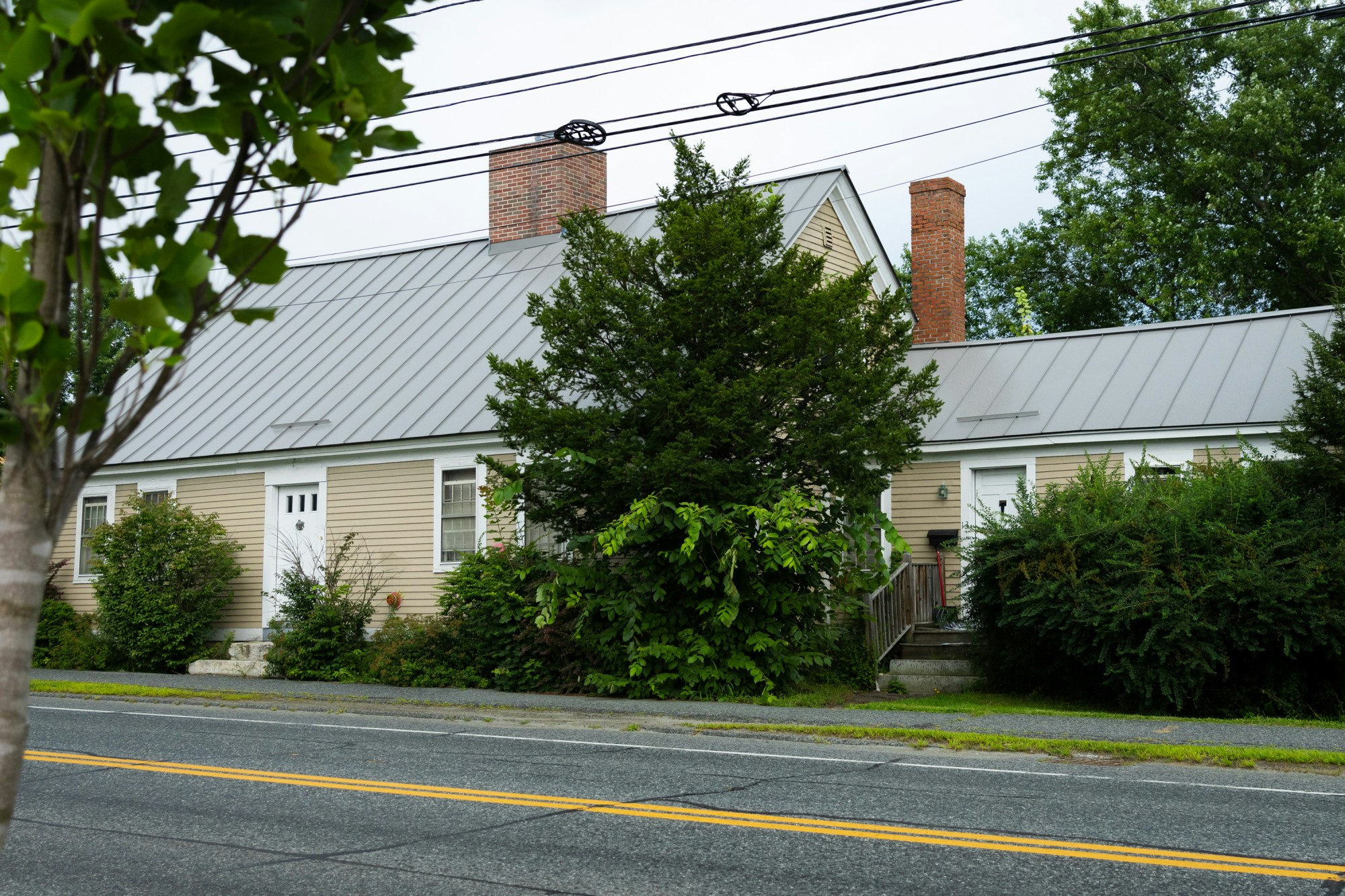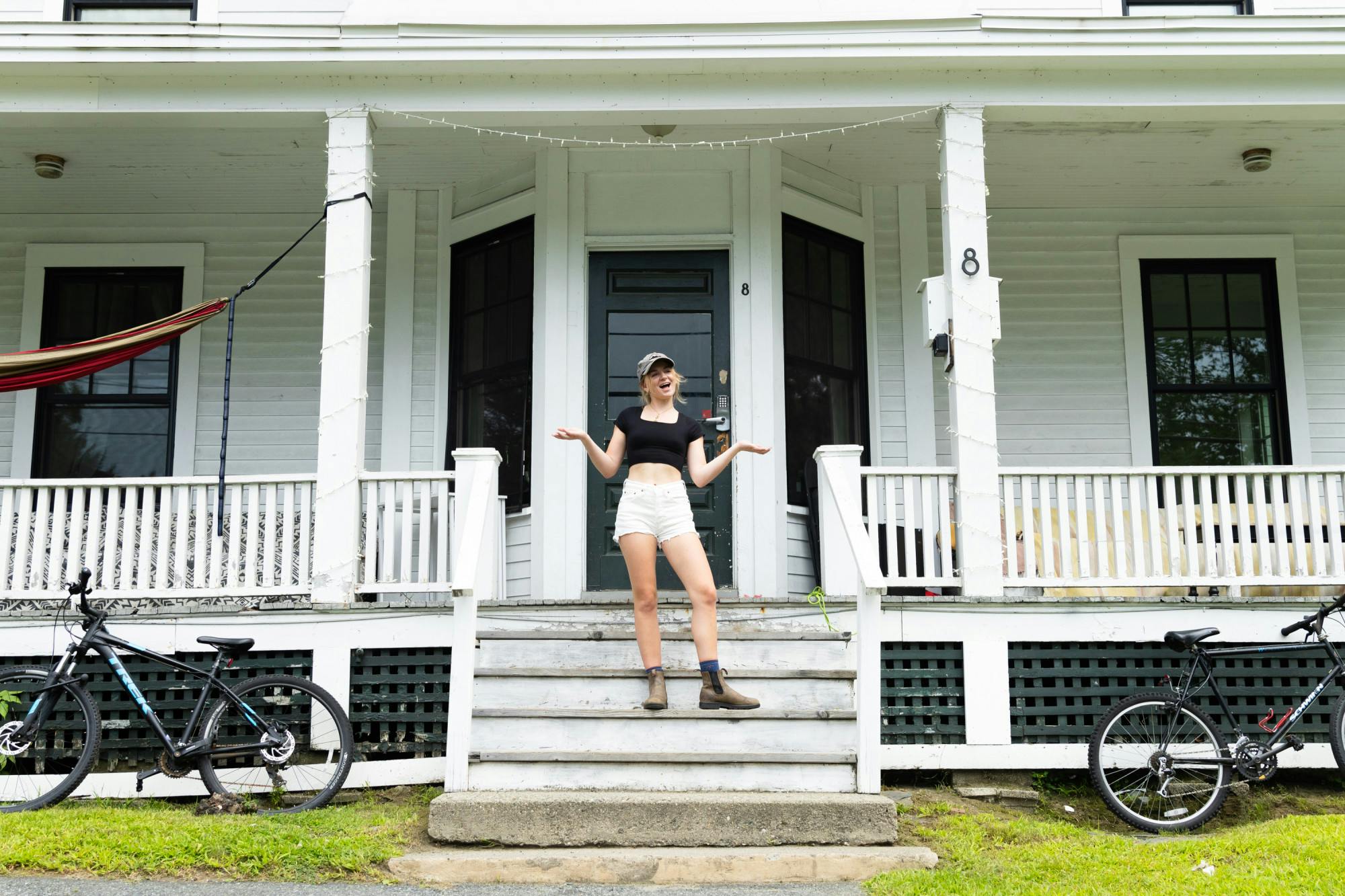If you saw me right now, sweeping up a massive dust pile in my second-floor kitchen, you might assume I’m nostalgic for Dartmouth dorms and their cleanliness due to the College’s hardworking janitorial staff. However, I’ve actually enjoyed living off-campus. Every day, I look forward to going home to porch conversations, sloppy cleaning jobs, sometimes successful kitchen experimentation and a small community of friends. This summer marks my first term at Dartmouth living in an off-campus house, located on 8 School Street and, not so creatively, nicknamed 8 School.
More firsts came and went this summer. Cooking and cleaning became fun for me. New friends appear on the porch daily. I watch passersby filter between campus and the neighborhood between West Wheelock and Maple Street over my morning crossword. The transition from dormitory to house has made me feel like a retiree, given my newfound passion for domestic leisure. Yet, my experience is not so unique. Many members of the Class of 2025 have migrated from common rooms to living rooms for 23X.
Oftentimes, when I invite over friends or bump into acquaintances, they’ll note their familiarity with my house. In both name and appearance, 8 School stands among a host of iconic off-campus Dartmouth houses. These homes bear the reputation of being some of the largest, most striking and grimiest residences in Hanover. I sought out their summer residents to find out what it’s like on the inside of these dream — or nightmare — houses.
Love Shack

One might expect to find only stacked apartment complexes and sad gray townhouses on the descent down West Wheelock Street, but nestled amongst these dull and dreary developments lies an oasis — a bright red, cozy home named after The B-52’s song, “Love Shack.” I interviewed Aiden Casey ’25 about his experience living in the home this summer.
“It’s kind of run down,” Casey said, keeping his description of the residence brief. “It’s red. It’s super fun to live in.”
As an upside to not living on-campus, Casey pointed out how off-campus housing is “half of the cost of Dartmouth housing for a term.” He also mentioned enjoying companionable spaces — such as a personal bedroom and living room shared with friends.
“It’s just been really nice during sophomore summer to have so many people off campus,” Casey said. “Sophomore summer, everything just seems more laid back … There are just different places to hang out.”
Red Barn

Another iconic red house sits on West Street: the distinctive Red Barn, with its fire engine exterior, gambrel roof and turf-covered porch. Resident Maja Tellander ’25 called the house’s name “self-explanatory,” since “it looks like a little red barn.” This house’s whimsical appearance and near-campus location cement it as an off-campus legend for many.
Like Casey, Tellander brought up the personal ownership of space as one benefit of off-campus living. She identified the “common space” as Red Barn’s best feature.
“[The common spaces are] really nice because at any given point during the evening or afternoon people will be out there,” Tellander said. “If you’re bored or don’t have homework or just need some socialization, you can just go sit out there and talk to people impromptu.”
She added that socialization is easier in off-campus housing than in on-campus residence halls, where one has to “reach out to people for that socialization.”
Barbershop

Whereas Love Shack fits two, and Red Barn eight, Barbershop is home to 12. Grace McInerney ’25, a current inhabitant and a coxswain on the women’s rowing team, said she knew she might live in Barbershop from her first term on campus, when she came to Barbershop to socialize with other rowers. She explained that historically, it is a house where many members of the men’s rowing team live.
McInerney said she appreciates both the new social setting and added privacy that comes with living off campus. “I was living on Mass Row last year so I feel like I was … in the fray of everything. I think it’s been nice because at times it’s overwhelming to be in the thick of it,” McInerney said. “I feel like it’s been a good chance to catch my breath.”
When she’s on campus, McInerney said “[she’s] itching to get back to the house because [she] just likes hanging out [there] so much.”
Although McInerney said she does not know much about the origin of the house’s name, she said she believes that “maybe somebody used to give haircuts here” — this writer, who is also a coxswain, knows that rower and former Barbershop resident Joseph Hajjar ’21 certainly used to give haircuts on the porch.
The Manor
Down the street from Barbershop, hidden behind massive bushes, one can find an unassuming, ’70s style, one-story home nicknamed, “The Manor.” Although The Manor may look dingy from the outside, when one enters, the home’s “big giant living room,” as resident Miles Hudgins ’25 has dubbed it, and floor-to-ceiling windows — which provide a view of the sprawling backyard — add charm to the grime.
Hudgins referenced the balcony and backyard, complete with disc golf, as two of The Manor’s best features, adding that he believes The Manor has developed its “flavor” through serving as the home to a long lineage of members of the men’s rowing team.
“The thing about The Manor is that so many guys have lived there over the years that people just leave stuff,” Hudgins said. For example, Hudgins said the home came with dozens of “kitschy” kitchen appliances he doesn’t see himself using.
“I think the name comes from the fact that the house is just so historically disgusting and gross,” Hudgins said when I asked about the origins of the name. “People will be like, ‘Oh, we’re going to the Manor,’ because it sounds kind of fancy even though the house is pretty gross.”
Chateau

Much like The Manor, Adrienne Coleman ’25 guesses, with a tinge of irony in her voice, that her residence is named Chateau “because it is similar to a French palace, but also gives antique vibes.” Like the other iconic summer homes, Coleman said the house is “very weathered” but “loveable.”
“It adds character to [the house],” she said in reference to Chateau’s worn state.
Coleman also cited socialization in a tighter-knit group and her large backyard as highlights of off-campus living. She added that one of her favorite parts of the house is the “huge backyard,” which allows residents to engage in water activities and “racket-sport activities on tables.”
Like McInerney, Coleman said living in an off-campus house can also make one feel removed from campus and more reliant on one’s “friend circle.”
She concluded that what makes summer houses at Dartmouth so iconic is how “they’re passed down from people who share similar experiences … [creating] this lineage of people.”
8 School

8 School is my very own home for the summer. I have both too many words and too few to describe the big white house on School Street. Like all the others, this house is messy and full of people. There’s a constant chatter on the porch, where roommates from all three floors mix and mingle with their friends. We’ve laid on the roof and ran to the river and begun a ritual of covering our walls with coloring book pages. I’m happy (and lucky) to call this place home, even if just for the summer. As I get ready to spend the next two terms off-campus, I know I’ll find myself reminiscing on this experience with fondness — although it is not perfect, it is always joyful.




